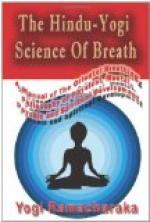Once more, remember that the mouth affords no protection to the respiratory organs, and cold air, dust and impurities and germs readily enter by that door. On the other hand, the nostrils and nasal passages show evidence of the careful design of nature in this respect. The nostrils are two narrow, tortuous channels, containing numerous bristly hairs which serve the purpose of a filter or sieve to strain the air of its impurities, etc., which are expelled when the breath is exhaled. Not only do the nostrils serve this important purpose, but they also perform an important function in warming the air inhaled. The long narrow winding nostrils are filled with warm mucous membrane, which coming in contact with the inhaled air Warms it so that it can do no damage to the delicate organs of the throat, or to the lungs.
No animal, excepting man, sleeps with the mouth open or breathes through the mouth, and in fact it is believed that it is only civilized man who so perverts nature’s functions, as the savage and barbarian races almost invariably breathe correctly. It is probable that this unnatural habit among civilized men has been acquired through unnatural methods of living, enervating luxuries and excessive warmth.
The refining, filtering and straining apparatus of the nostrils renders the air fit to reach the delicate organs of the throat and the lungs, and the air is not fit to so reach these organs until it has passed through nature’s refining process. The impurities which are stopped and retained by the sieves and mucous membrane of the nostrils, are thrown out again by the expelled breath, in exhalation, and in case they have accumulated too rapidly or have managed to escape through the sieves and have penetrated forbidden regions, nature protects us by producing a sneeze which violently ejects the intruder.
The air, when it enters the lungs is as different from the outside air, as is distilled water different from the water of the cistern. The intricate purifying organization of the nostrils, arresting and holding the impure particles in the air, is as important as is the action of the mouth in stopping cherry-stones and fish-bones and preventing them from being carried on to the stomach. Man should no more breathe through his mouth than he would attempt to take food through his nose.
Another feature of mouth-breathing is that the nasal passages, being thus comparatively unused, consequently fail to keep themselves clean and clear, and become clogged up and unclean, and are apt to contract local diseases. Like abandoned roads that soon become filled with weeds and rubbish, unused nostrils become filled with impurities and foul matter.
One who habitually breathes through the nostrils is not likely to be troubled with clogged or stuffy nostrils, but for the benefit of those who have been more or less addicted to the unnatural mouth-breathing, and who wish to acquire the natural and rational method, it may perhaps be well to add a few words regarding the way to keep their nostrils clean and free from impurities.




